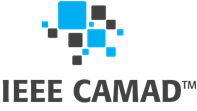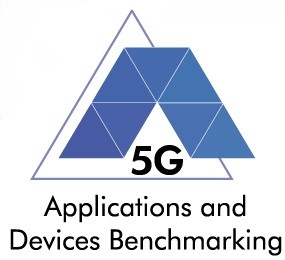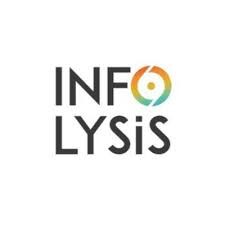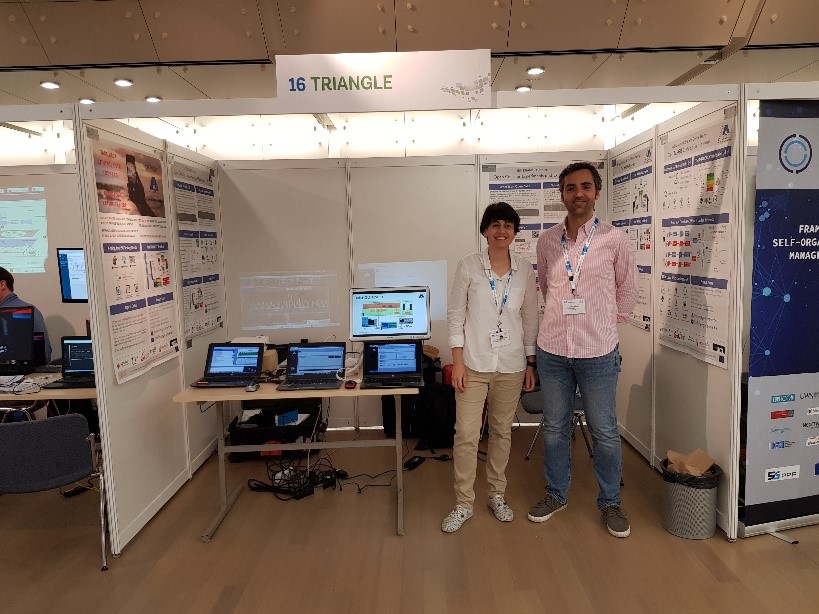Here we bring you a selection of experiments from different companies and institutes that were successfully performed on the TRIANGLE testbed.
Testing a 4G towards 5G remote access point with centralised RAN
The Wireless System Lab (Wisylab) is dedicated to research, link-level simulation, design and implementation of physical layer (PHY) components of wireless communication systems, using software defined radio (SDR) techniques. WisyLab is part of Politecnico di Milano.
The experiment carried out on the TRIANGLE testbed was called “Dual Radio-over-Copper (RoC) Remotization for Multi-RAT Centralized-RAN Architecture in 5G Deployments.”
Next generation (5G and beyond) comms networks are expected to incorporate the pre-existing LTE and WiFi connectivity of all interconnected devices with multiple available interfaces, guaranteeing highrate/low-latency communications. In this context, Dual-RoC is the integration of Multi Radio Access Technology (RAT) into a copper-based Centralized Radio Access Network (C-RAN) architecture.
The objective of Dual-RoC Experiment is to experimentally observe and demonstrate the feasibility of the interplay between an all-analog C-RAN architecture based on LAN cables and Multi-RAT.
Results: Dual-RoC demonstrated the feasibility of carrying both MIMO LTE and WiFi signals over the same LAN cable using an all-analog relaying by selected mapping of IF frequencies onto the cable twisted pairs. The performance degradation experienced for high MCS and high IF is mainly due to low signal power received at the user device due to attenuation introduced by the analog relay over cable.
“Thanks to the experiment I conducted within TRIANGLE, it was possible to bring the academy closer to the industry, thus bridging the gap between theory and practice and getting unique results!”
Testing of improved scheduling algorithms of a 4G towards 5G software defined RAN
IS Wireless is an advanced wireless communications company who are developing protocols, simulators and IP algorithms for 4G and 5G networks.
The experiment carried out on the TRIANGLE testbed was called “PHYSCHED: Design space exploration and performance testing for PHY & scheduler.”
The motivation of ISWireless to experiment on the TRIANGLE testbed was to explore the design space for improvement and further implementation of an LTE eNB scheduling algorithm.
There were two objectives for the experiment 1) Design space exploration of standard-compliant environment for LTE eNB Scheduler optimization 2) Testing and validation of LTE PHY Lab downlink receiver processing chain.
Results: In the Scheduler experiment, the KPIs measured and returned by both UXM and TACS4 were successfully analyzed dependent on the transmission configuration and a known channel profile for multiple scenarios.
ISWireless says “We had the opportunity to use the specialized equipment to explore a design space for the scheduling algorithms we have gained a solid ground for improvement and further implementation of our solutions for 4G/5G base stations.”
Testing how a Chatbot behaves in a 4G towards 5G context
INFOLYSiS is a highly innovative SME, which realises innovative technologies and exploits cutting-edge research to deliver state-of-the-art services and products. IoT interoperability, SDN/NFV, 5G, Virtual Reality, Augmented Reality, Video Quality, Cloud computing, Mobile Communications. The experiment on the TRIANGLE testbed was 5G-Bot: Evaluation of 5G on QoE of Chatbot applications.
The experiment carried out on the TRIANGLE testbed was called “5G-Bot: Evaluation of 5G on QoE of Chatbot applications”.
The objective of the 5G-Bot experiment was to test the behaviour of chatbot applications under different mobile reception conditions, network traffic, processing power schemes and battery utilisation plans in order to quantify and assess their impact on the QoE level and to stress the reliability of the chatbot app under different network conditions.; and while measuring power usage.
Results: Infolysis acquired experience and documentation on which factors and parameters may affect the performance of chatbot apps and up to what degree of severity. 5G-Bot experiment gave the opportunity to Infolysis to create a performance map under different scenarios, KPIs and metrics.
Infolysis says “I added value to the performance credibility of chatbot applications and improved users QoE!”
Testing of cellular grid in 4G towards 5G network context
Comsensus have sensors to automatically track equipment overheating, energy consumption, the quality of the power in the grid, moisture level, etc. and that the automatically collected in-situ data integrates with the company IT infrastructure.
The experiment carried out on the TRIANGLE testbed was called “Cellular Grid: Cellular Networks for Real-Time Monitoring of Smart Grid.”
The scope in the smart grid industry has been extended to cover also elements like distributed energy resources, electric vehicles, protection relays, and metering devices, where wired communication is not cost effective to install and maintain. 5G can have comparable performance to wired infrastructure, allowing to discretize and network individual grid elements, which can then implement intelligent sensors and switching decisions to isolate faults, reroute power and self-heal the grid. This project evaluates the connectivity requirements of smart grid applications in 5G.
The objective of the experiment allowed Comsensus to emulate their PMU/PQM devices use in different real life (LTE Cat-3, LTE Cat-M1, LTE Cat-NB1) network scenarios and thereby appropriately select the technology and/or adjust their design.
Results: The Testbed was used to test the wireless link performance for different location and user density. The KPIs measured during the experiment include end-to-end delay and throughput. The results of the experiment confirmed that low throughput uplink with real-time constraints are viable using LTE Cat-3 even in the case of challenging channel conditions. In the high throughput scenario, the target throughput could not be reached in any of the predefined channel conditions.
Comsensus says “Thanks to TRIANGLE we were able shorten the product design cycle, obtain a set of measurements in a controlled environment & experiment with technologies not yet available commercially”
Please refer to the TRIANGLE website for the full details here: Showcase












